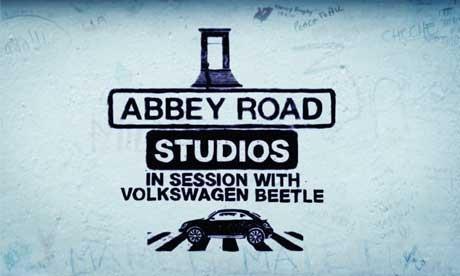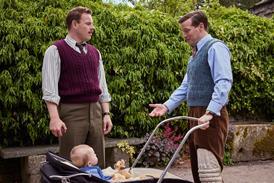My Little Eye moves from Apple Mac Pro to HP Workstations to cut time and boost productivity.

“In the three months I’ve been using the HP machines I’ve dramatically reduced downtime, I used to face up to 10 crashes a day on the Mac Pro. It’s saving me an hour a day during busy production days - and that makes life a lot less stressful.”
Jon Walton, owner, My Little Eye
Industry
Media
Objective
Upgrade aging software and hardware to improve productivity and maintain industry leadership
Approach
Consulted with Adobe, advised to switch to HP Workstations to best support modern software requirements
IT matters
- Enabled smooth rendering of graphics and real-time playback of multiple content feeds, improving production times
- Minimal crash incidents – from up to 10 per day, helping increase productivity and decrease stress levels
Business matters
- Improved mobility, using HP Z1, allows editing to be done on-site, brings production team closer together
- Faster production times allows for more new projects to be taken on
HP Workstations create production efficiencies
My Little Eye is an independent, broadcast post-production company, specialising in music content. It has worked with high profile artists including The Killers, David Bowie, Alt-J, Kings of Leon and Paul Weller. To work effectively the editors require hardware capable of supporting high performance editing software.
It needs processing speeds to allow for fast render times, instant playback and multiple streams of content.
Challenge: Live music, time pressures
My Little Eye is an independent, broadcast post-production company, based in Surrey and established in 2007. In that time it has edited show reels, short films, interviews, documentaries, trailers and cut corporate films for global phone companies, cinema chains and charities.
Its specialism is music. Jon Walton, the company’s founder, spent seven years working for Abbey Road Studios; My Little Eye has since worked with high profile artists including The Killers, David Bowie, Alt-J, Kings of Leon and Paul Weller.
One of its biggest projects is the Abbey Road Studios: In Session with VW Beetle series, (previously known as Live From Abbey Road), now in its sixth season and broadcast on Channel 4. The series features live music performances and interviews, filmed with as many as five cameras. Walton’s job is to edit this content down to a 30-minute programme. The shows are then broadcast within a week of filming.
To work effectively Walton requires hardware capable of supporting high performance editing software. He needs processing speeds to allow for fast render times, instant playback and multiple streams of content.
Solution: Alternative hardware required
For the first four series of Live From Abbey Road, the production team had used Final Cut Pro running on Mac Pros. “By series four the kit was starting to struggle,” says Walton. “It was effectively four years old. My Mac Pro was crashing up to 10 times day, and every time I needed to use an affect it was taking an age to render.”
The solution, he says, was to speak to Adobe about its Creative Suite software.
“Despite Avid still dominating the very high-end of the market such as Hollywood feature films, for me, the best option is now Adobe Creative Suite 6 Premiere Pro. Adobe’s advice was that we could still run its software on the Mac Pro, but performance would be comprised. They suggested HP Workstations.”
As the primary editing suite Jon is using two HP Z820s, each of these machines is configured with dual Intel Xeon E5-2680 processors, a 256GB primary SSD with three 300GB SAS drives configured with RAID 5, 64GB RAM and a NVIDIA Quadro 6000 Graphics card. The DIT workstation doubling as the Assistant Edit machine is the HP Z1, running an Intel Xeon E3-1245 processor, a single 1TB SATA HDD, 32GB RAM and a NVIDIA Quadro 4000m Graphics Card.
Walton, a long time Apple user, says he had no issues with switching to HP. There have been no problems switching from Final Cut Pro to Adobe, all previous contenthas transferred across, with minimal software walkarounds.
Benefits: More productive, faster turnaround times
It means Walton is now able to handle real-time playback, with five or more streams of HD content and render graphics quickly: “At this end of the market you need 30GB of RAM to get through the work. In the three months I’ve been using the HP machines, I’ve increased productivity. It’s saving me an hour a day during busy production days - and that makes life a lot less stressful.”
Episode One of the latest series, a 45-minute special featuring Paul Weller, was filmed on the Friday with the edit complete by the Monday. It was broadcast on the Wednesday. “We’ll work ‘til 4am if necessary, but we have to know the kit can handle the workload. The HP machines can,” says Walton.
If the HP Z820 is Walton’s new workhorse, the HP Z1 has proved to the biggest revelation. “It has the performance and the mobility; I can use it in the edit suite or take it with me,” says Walton.
“It means I can work on-site, which has been great for business. I can edit while the production team is filming and show live feedback of shots. The director appreciates it, the camera operators appreciate it and it generally helps us work better as team. “Without the right kit, we can’t run the company. With HP Workstations, we now have the right tools.”
Learn more at hp.co.uk/workstations
Customer at a glance
Hardware
HP Z820
- Intel Dual Xeon E5-2680 processors
- 256GB primary SSD
- 3x 300GB SAS drives
- RAID 5
- 64GB RAM
- NVIDIA Quadro 6000 Graphics
HP Z1
- Intel Xeon E3-1245 processor
- 1TB HDD
- 32GB RAM
- NVIDIA Quadro 4000M Graphics

























No comments yet